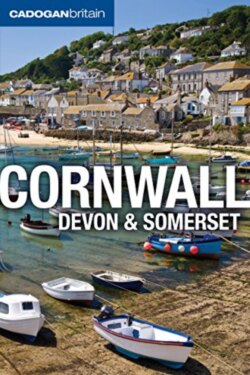Читать книгу Great Book of Spoon Carving Patterns - Joseph Fullman - Страница 20
На сайте Литреса книга снята с продажи.
Making the Modern Southwest
ОглавлениеTourists weren’t the only ones to discover the charms of the Southwest. In the late 19th and early 20th centuries, the picturesque vistas of the north Cornwall coast began attracting artists who founded influential communities, first at Newlyn and later at St Ives. The region also provided literary inspiration to a host of 20th-century writers including D.H. Lawrence, Daphne du Maurier, Agatha Christie and Sir Arthur Conan Doyle. Some even played a part in encouraging tourism. John Betjeman, the poet laureate, wrote guidebooks to Cornwall and Devon in the 1930s in an attempt to bring visitors to the county (he lived to regret it – when the hordes arrived he felt that they rather spoilt the place).
As with the rest of the country, the First World War marked a turning point in the fortunes of the Southwest, removing a large proportion of the male workforce. Fortunately the region suffered no direct damage. However, the same couldn’t be said for the Second World War when many cities were heavily bombed, including Exeter and Plymouth, neither of which were rebuilt with any great care or aesthetic regard in the decades that followed. Post-war, as the British Empire was being wound up, so the region’s ports, which had once played a prominent role in supplying the colonies, began to fall on hard times.
Since the 1950s people have been looking for tourism to fill the void left by the decline of trade and industry, not always successfully. Hand in hand with this has come a growing sense of environmental concern, the first significant signs of which saw Dartmoor and Exmoor designated as national parks in the 1950s.
The closure of many of the region’s local branch lines following the Beeching Report of the early 1960s had perhaps less impact on tourism than might have been expected, largely because it took place at the same time as a large road building scheme. The M5, linking Birmingham with the Southwest, was opened in 1963 and extended over the next decade and a half until it reached Exeter, while the region’s other major roads, particularly the A38 ‘holiday route’ to Bodmin and the A30 to Land’s End, were also improved. Despite all the road building, congestion has become a severe and growing problem here, particularly in the summer months, with supply never quite able to match demand.
Though fishing continues as a viable industry in many places, it’s an industry facing problems, not least the decline of fish stocks and consequent imposition of strict quotas by the European Union, which has seen significant numbers of fishermen go out of business. Many farms have fared little better, and for both industries, tourism is often seen as a way of providing a new or secondary income.
Over the past few decades the Southwest has become a popular choice for second-home buyers, which has kept the estate agency industry buoyant, but has also priced many local people out of the housing market. And holiday homes that are left empty for several months of the year damage the local economy.
But tourism has also had its success stories, notably the wealth of top-class hotels and fish restaurants that have opened in the past decade (as exemplified by Rick Stein’s seafood empire in Padstow), and the Eden Project, the giant artificial rainforest created just after the millennium which is now the region’s most popular tourist attraction. But it’s not been enough to plug the fiscal gaps. Indeed, Cornwall’s economy reached such a low ebb that in 1999 it was declared one of the European Union’s poorest economic areas, and was awarded more than £350 million worth of aid over the next half decade.
The trouble is, the people here know from bitter experience that, no matter how many hotels, restaurants and attractions you open, an economy based on tourism is only ever a single health-scare away from disaster. In 2001 a devastating outbreak of foot-and-mouth disease essentially shut the entire countryside down to tourism for months, closing moors, footpaths, cycleways, bridleways and beaches and sending many small holiday businesses to the wall. Thankfully, things have recovered in the years since, but the region remains ever wary.
Today, this proud region is searching for a new history – the one founded on trade and industry is over, the new one based on tourism and the service sector is not quite fit for purpose. There’s a feeling that something big needs to step into the breech for the region to return to prosperity. The trouble is, no one is quite sure what that might be, yet.
